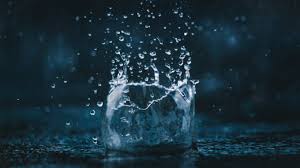Europe’s state of water 2024: the need for improved water resilience

This report presents the state of Europe’s water. It outlines three overarching challenges facing future European water management: 1. protecting and restoring aquatic ecosystems; 2. achieving the zero pollution ambition; 3. adapting to water scarcity, drought and flood risks.
Europe’s water is under significant pressure, presenting serious challenges to water security, now and in the future. As such, Europe urgently needs to improve its resilience and ensure sustainable freshwater supplies for people and the environment.
Water stress and flooding
Water stress is already occurring in Europe. It affects 20% of Europe’s territory and 30% of the population every year, figures that are likely to increase in the future due to climate change.
As climate change unfolds in Europe, managing flood risk affordably and sustainably will become increasingly important. Intense rainfall has already increased in parts of Europe, leading to floods and growing flood risks. Flooding affects human well-being and ecosystems, with potential loss of life and significant economic losses.
Status of water
The deadline set by the Water Framework Directive (WFD) for European rivers, lakes, transitional, coastal and groundwaters to meet good status was 2015. That was not met and there has been little improvement since 2010. In 2021, only 37% of Europe’s surface water bodies achieved a good or high ecological status. 29% achieved a good chemical status.
The majority of protected aquatic habitats and species in the EU are assessed as having a poor or bad conservation status. Reporting under the WFD shows that the status of some aquatic plants has improved, but this rarely translates into attaining overall good ecological status.
Europe’s waters continue to be impacted by chemicals, predominantly by atmospheric pollution from coal-powered energy generation and diffuse pollution from agriculture. The lack of improvement in chemical status can be partly attributed to long-lived pollutants, such as mercury and brominated flame retardants. If these long-lived pollutants were not considered, 80% of surface waters would achieve good chemical status rather than 29%.
Groundwater supplies two thirds of the EU’s drinking water and supports ecosystems such as wetlands and rivers. EU Member States report that 77% of groundwater body area is in good chemical status; major pollutants causing failure are nitrates and pesticides. 91% of groundwater is reported to be in good quantitative status. WFD data in this report are based on the 19 Member States that reported to the European Environment Agency.
Pressures on Europe’s water
Member States have reported that the most significant pressure impacting both surface and groundwaters arises from agriculture, resulting from water use and pollution from the intensive use of nutrients and pesticides. Changes in farming practices and new technologies can help ensure continued productivity while enabling agriculture to reduce pollution and adapt to lower water use.
Surface waters are widely affected by mercury and brominated flame retardants. Mercury, released to the air particularly from coal burning for energy production, later returns to the earth’s surface with rainfall. The pathways taken by brominated flame retardants are not well understood, although these persistent substances are no longer approved for use.
The use of nature-based solutions should be expanded to enhance water retention and ‘slow the flow’ of intense rain to mitigate flooding. Major pressures include changes to physical features and natural flow, such as dams and channelisation, which degrade natural habitats. Achieving free-flowing rivers and restored wetlands is essential for healthy, biodiverse freshwater ecosystems.
Improving Europe’s water resilience to a changing climate
Urgent action is required to improve Europe’s water resilience. Climate change is disrupting weather patterns and further increasing pressures on our water resources and ecosystems. Europe’s water management practices are poorly adapted to cope with such rapid and large-scale change, which will compromise water security.
Reducing water use and improving water efficiency are key to tackling water stress. Reducing leakage, using water-efficient devices and processes and increasing water reuse would improve efficiency. Water pricing can also be an important driver for reducing water use and improving efficiency, while also providing a mechanism to fund water investments. Target setting, focused on saving water or reducing demand, could drive action and facilitate the monitoring of progress towards greater water resilience.
Improved water management is needed to strengthen Europe’s water resilience and reduce pollution. Up-to-date and timely information on water quantity and quality are critical to Europe’s ability to manage its water. A more robust knowledge base is also needed to enable more equitable and sustainable water allocation between competing uses, including the environment.





